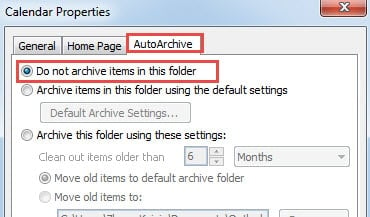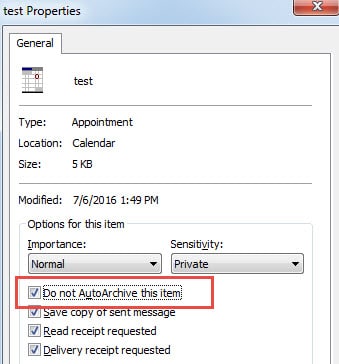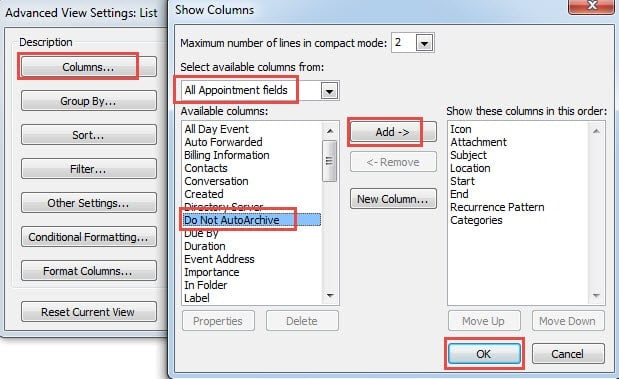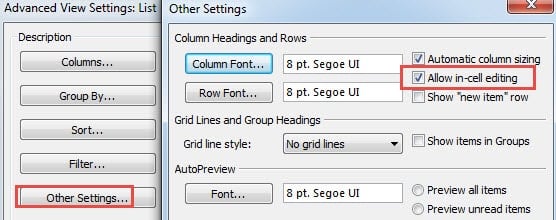When Outlook Auto-Archive is enabled, all items will be removed at a specific date, including recurring appointments and meetings. In order to avoid disappearance of recurring calendar items, you need to disable its auto-archive.
Outlook Auto-Archive does make it convenient for us to keep our mailbox clean, but at the same time, it will bring out some troubles as well. For instance, it will clear up the recurring calendar items automatically. In this case, we will miss our important appointments. Hence, it is advisable to stop Auto-Archive of calendar items. Here are 3 approaches.
Stop Archiving the Entire Calendar Folder
- For a start, launch Outlook application and head to “Calendar” page.
- Then in navigation pane, right click the target calendar folder, and select “properties” from its context menu.
- Next in the new popup dialog box, switch to “Auto-Archive” tab.

- On this tab, select “Do not archive items in this folder.
- Finally click “OK” to save the folder properties.
This method will be applied to all items in this calendar folder. But if you only would like a few items not to be archived, you should take the following steps.
Disable Auto-Archive of Individual Calendar item
- To begin with, you should locate and select the specific items in Calendar.
- Then press “Alt + Enter” key to have the items’ properties shown.
- Next in the new dialog box, you can find the option – “Do not Auto-Archive this item”. Thus uncheck it.
- Finally click “OK” to save the item properties.
The above way is effective when you want to exclude only a few items to archive. But if you want to stop auto-archiving quite multiple items, you are better off adding “Do not Auto-Archive” shown in column.
Set the “Do not Auto-Archive” Shown in Column
- At the very outset, go to “View” ribbon, click “Change View” button and choose “List”.
- Then click “View Settings” button to open a new dialog of “Advanced View Settings”.
- Click “Columns” button. Another dialog box will show up. You should select “All Appointment fields” in the “Select available columns from” list.
- Next from list of “Available columns”, locate and choose “Do Not Auto-Archive” and click “Add” button in center to add it to the right side.
- Click “OK” button to return to “Advanced View Settings” window, in which you need to click “Other Settings”.
- In the subsequent screen, you should ensure “Allow in-cell editing” option is selected.
- Finally click a series of “OK” to get back to Outlook Calendar.
After the above steps, in “List” view, you can select the multiple calendar items simultaneously under “Not Auto-Archive” column. It is much convenient.
Keep a Formidable Outlook Repair Tool Nearby
Outlook is considerably prone to corruption due to various malicious factors. Therefore, to retrieve corrupt Outlook data, you should keep a potent repair tool nearby such as DataNumen Outlook Repair. This tool can scan and repair PST file within seconds.
Author Introduction:
Shirley Zhang is a data recovery expert in DataNumen, Inc., which is the world leader in data recovery technologies, including sql recovery and outlook repair software products. For more information visit www.datanumen.com



